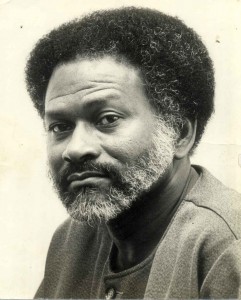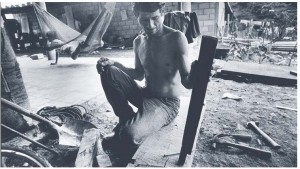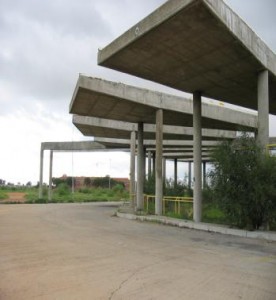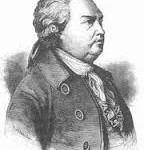Moladi: Developing Affordable Housing Solutions in South Africa
www.inclusivebusiness.org. Moladi, a small family-run business based in South Africa’s Eastern Cape Province, is innovating to address the challenge building sustainable housing for low-income communities. It utilizes a unique plastic injection molded technology to produce cast-in-place mortar structures. The process allows unskilled laborers to use indigenous materials to quickly and cheaply construct high standard permanent buildings that are earthquake, cyclone and tsunami resistant.
Read more: http://www.inclusivebusiness.org/2011/01/moladi-affordable-housing.html
The Netherlands – Digital Museum Of Public Housing And Aedes Archive
 socialhistory.org. Amsterdam. In honour of the centennial anniversary of the Housing Act, the IISH was commissioned to compile a digital museum of public housing in 2001. The foundation consisted of the archives and the photograph collection of Aedes, the umbrella of housing construction associations.
socialhistory.org. Amsterdam. In honour of the centennial anniversary of the Housing Act, the IISH was commissioned to compile a digital museum of public housing in 2001. The foundation consisted of the archives and the photograph collection of Aedes, the umbrella of housing construction associations.
The website features the chief developments in Dutch social housing construction in the twentieth century. The century of public housing began with the Housing Act of 1901. This act introduced quality standards for construction and regulated government funding for municipalities and housing construction firms. The resulting developments consisted of stereotypical townhouses, as well as suburbs, blocks of flats and working-class estates, which is most of the housing that surrounds us today.
Fifty-one projects were selected for the new web site: five housing development projects typical of each decade, representing a national cross-section wherever possible. Each project presented features background information and five images. Viewers select housing by period, as well as by project, place, street, province, year, housing construction association and architect or a combination of these criteria.
The Digital Museum is linked to the Museum Het Schip web site, which is the Information and documentation centre for public housing in Amsterdam. Guided tours and exhibitions are organized at Poste Restante, which is located at the former post office in Het Schip. The programme council Wij wonen – 100 jaar Woningwet, is a collaborative effort between the City of Amsterdam, the Stedelijke Woningdienst Amsterdam and the districts, with financial support from the Amsterdamse Federatie van Woningcorporaties.
Read more: http://socialhistory.org/en/collections/aedes-archive
Wan Bon – Wan Sranan – Wan Pipel: Robin ‘Dobru’ Raveles 1953-1983
Op 2 december 2002 maakte ik mijn opwachting bij Yvonne Raveles-Resida, aan de Van Rooseveltkade 34 in Paramaribo, om met haar te bespreken of in januari 2003 aan de biografie kon worden begonnen. Op 8 januari – een voor mij belangrijke dag – zou ik een aanvang maken met het doorspitten van de persoonlijke archieven van Robin Raveles. De trap naar boven leidde naar zijn studeerkamer aan de voorzijde van het huis met een balkon uitkijkend op de Nederlandse ambassade. De hoeveelheid verzamelde kranten, epistels, paperassen die uit de dozen te voorschijn kwam, zag er overweldigend uit. Zittend aan Dobru’s schrijftafel bestudeerde ik dag na dag de documenten. Zou het lukken om in de komende twee maanden van mijn verblijf in Suriname een goede eerste screening te maken? Selectie van de meest relevante en interessante stukken zou een van de grootste problemen worden.
Welke criteria zou je moeten hanteren om tot een uiteindelijke selectie te komen? Eddy Bruma, oud-voorzitter van de PNR, had gelijk toen hij zei dat Dobru de beste verzamelaar is geweest die hij had gekend. In de studeerkamer bevonden zich, naast zijn eigen publicaties, ook rijen boeken, gesigneerd door collega-schrijvers uit het Caraïbisch gebied en Latijns-Amerika onder wie Edward Kamau Brathwaite, Ernesto Cardenal, Jan Carew, Martin Carter, Selwyn Cudjoe, Nicolás Guillén, Earl Lovelace, George Lamming, Andrew Salkey en A.J. Seymour. Oude anthologieën maakten ook deel uit van de collectie, onder andere Caribbean Voices. An Anthology of West Indian Poetry (1968) en A Treasury of Guyanese Poetry (1980). Ook de Surinaamse schrijvers Trefossa, Slory, Shrinivási, Ooft, Doelwijt, Verlooghen en vele anderen waren goed vertegenwoordigd. Voorts waren er talloze losse vellen met aan hem toegestuurde gedichten en een groot aantal boeken aan Dobru opgedragen van auteurs die hij tot schrijven had aangemoedigd.
Attie S. van Niekerk – The Broken Circle: The Prevalence of Fear in Low-Cost Housing in South Africa
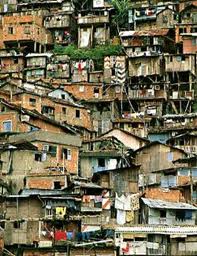 The South African township is characterised by low-cost houses as well as the so-called ‘shack’ that consists of corrugated iron, plastic and cardboard. In several research projects high levels of fear have been encountered among residents of these low-cost houses, in both rural and urban contexts (Holm, Murray and Pauw, 2005).
The South African township is characterised by low-cost houses as well as the so-called ‘shack’ that consists of corrugated iron, plastic and cardboard. In several research projects high levels of fear have been encountered among residents of these low-cost houses, in both rural and urban contexts (Holm, Murray and Pauw, 2005).
The high levels of fear among residents of low-cost housing present us with a combination of problems of a technical, socio-cultural and religious nature. Modern science, as it has developed since the time of the European Renaissance, has not been very successful in addressing this type of problem. Modern science has been remarkably successful in unlocking the secrets of nature and in utilising the potentialities of nature, through a strong emphasis on the superiority of reason. But this emphasis has had a reverse side: scientists tended to dismiss all the non-rational, yet vital elements of human life and reality, such as the destiny of humanity, human freedom and spontaneity (Prigogine and Stengers, 1984: 34-5).
From early on, African writers have pointed out that the rationalism of Western culture – also of Western missionaries – was alien to the African experience. Africans combine political, cultural and religious resistance to Western rationalism; maybe because Western rationalism seems to be closely associated with the desire to control and dominate. Such resistance can be traced back to African writers early in the twentieth century.
African writers have repeatedly pointed out that there are important differences between Western and African thought patterns: in African tradition, causality may be understood in a magical way, because spirit permeates the whole universe to such an extent that the self and the world, mind and matter interpenetrate each other and cannot be distinguished (Anyanwu, 1984: 87-93); Ibe Nwoga (1976: 17-8, 21) contrasts traditional Western man’s more detached, analytical mode of understanding with traditional African man’s more holistic, instinctive mode of understanding.
In this essay I will argue that the prevalence of fear in low-cost housing is a result of the dysfunctional interaction between the modern, Western or global worldview and the traditional African worldview. The different worldviews meet, interact and combine in the household (household can be seen as a micro-system formed by numerous elements that interact and combine to form a whole, showing properties that are properties of the whole, rather than properties of its component parts), and the end result is a rather chaotic manifestation in the household: in the architecture, the social relations, and the interpretation of illness. These aspects are so intertwined that an architectural problem (how to design an energy-efficient house) is related to a religious problem (why do Christians fear that witches will fly through the window?) or maybe to a psychological problem (is such fear a function of conflict with other people?).
Read more: http://rozenbergquarterly.com
El Salvador en transición
El acuerdo de paz firmado el 16 de enero de 1992 entre el gobierno y el movimiento rebelde FMLN puso fin a más de diez años de guerra civil en El Salvador. En este capítulo trataré los antecedentes de esa guerra y el desarrollo y el proceso que llevaron al acuerdo de paz. El énfasis radica en los cambios entre el estado, los partidos políticos y las organizaciones de la sociedad civil. De esta manera surge una imagen del contexto social en que nacieron las organizaciones de ayuda para el desarrollo y del espacio donde estas organizaciones intervinieron. Para dar una imagen global del contexto histórico de la guerra civil, me adentraré primero en algunos importantes desarrollos políticos y económicos que tuvieron lugar entre 1870 y 1970. Trataré después a los principales actors en los decenios anteriores a la guerra civil. Estos eran, entre otros, los (nuevos) partidos políticos, los militares, las organizaciones paramilitares, la iglesia y los movimientos revolucionarios. Seguirá a continuación el tema de la guerra civil, en el que se prestará atención al papel desarrollado por el FMLN, los partidos políticos, el gobierno salvadoreño y los Estados Unidos. Para terminar, se tratará el acuerdo de paz. Esbozo allí los cambios principales que tuvieron lugar en base a la llamada ‘triple transición’ en El Salvador.
Una historia de exclusión
Para Torres Rivas y González Suárez (1994:12), la guerra civil fue el resultado de un largo período de exclusión social, económica y política a la que fueron sometidos grandes sectores de la población. Este proceso tuvo profundas raíces históricas y llevó en los años sesenta y setenta a la polarización y al agravamiento de la crisis en la sociedad salvadoreña. La crisis social que surgió en estos años no puede explicarse sólamente como el resultado de la influencia de los Estados Unidos o de la oposición de la poderosa oligarquía agraria a las reformas (Carrière y Karlen, 1996:368). Hubo una combinación de factores internos y externos que en los años anteriores a la guerra impidió una modernización a fondo de la política, la economía y la sociedad. La mayoría de los análisis de la guerra civil salvadoreña comienzan en la segunda mitad del siglo pasado. Este fue el período en el que se desarrollaron el cultivo y la exportación de café a gran escala. El café tuvo una influencia definitiva en las relaciones sociales salvadoreñas en gran parte de ese siglo. El cultivo y la exportación de este producto fueron la reacción ante la disminución de la demanda internacional de indigo, un colorante azul oscuro de textiles que constituía hasta entonces el principal producto de exportación de El Salvador. Las mejores condiciones para el cultivo del café se dan en suelos situados entre los 500 y los 1.500 metros sobre el nivel del mar. Una gran parte de los suelos adecuados para el cultivo del café eran propiedad comunal, entre otros de pueblos indígenas. El gobierno dirigido (desde 1871) por los liberales era partidario de la comercialización en el usufructo de los suelos y abolió la propiedad comunal de la tierra en las reformas de 1881 y 1882. Un número relativamente pequeño de familias (entre ellas las dedicadas antes al cultivo del indigo) compró grandes extensiones de tierra, dominando rápidamente la producción y el comercio del café. Read more
Awareness Is Power: Tactics For Staying Safe In Violent Spaces
Violence is everywhere (Lindiwe, Hector Peterson Residence).
In order to understand the concept ‘awareness’, Hastrup’s (1995) explanation of consciousness is invaluable, especially to identify with people’s behaviour in violent situations. She explains that our patterns of thinking are not subject to paths of practical reason, but that we rather constantly reformulate our whole existence through our actions; a reconsideration of our ideas of consciousness is thus necessitated (ibid.: 99). Hastrup reminds us that we are inarticulate and that expression is not limited to the verbal. Expression, rather, takes place in various forms (ibid.).
Given Hastrup’s suggestion to understand consciousness from multiple angles, we approach a field within which questions of ontology and methodology join: how do people think and how do we know? (ibid.; Ross 2004: 35). What tools should anthropologists use to access these forms of consciousness that are so intertwined in social space, affecting it, being affected by it and being its defining capacity? In an environment of violence, students are affected, they can potentially have an influence on this through the tactics they use to stay safe and, at the same time, can become the defining capacity of such an environment. These are among the dynamics involved in conceptualising ‘awareness’ of potential danger in potentially dangerous areas. This awareness is positioned on various levels.


